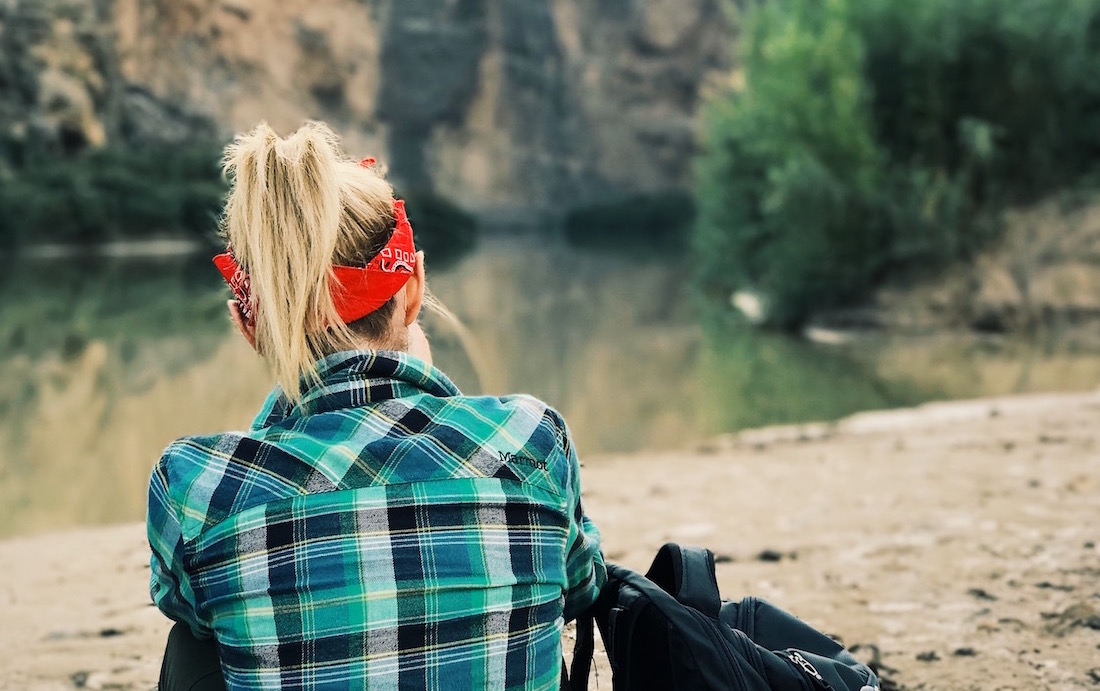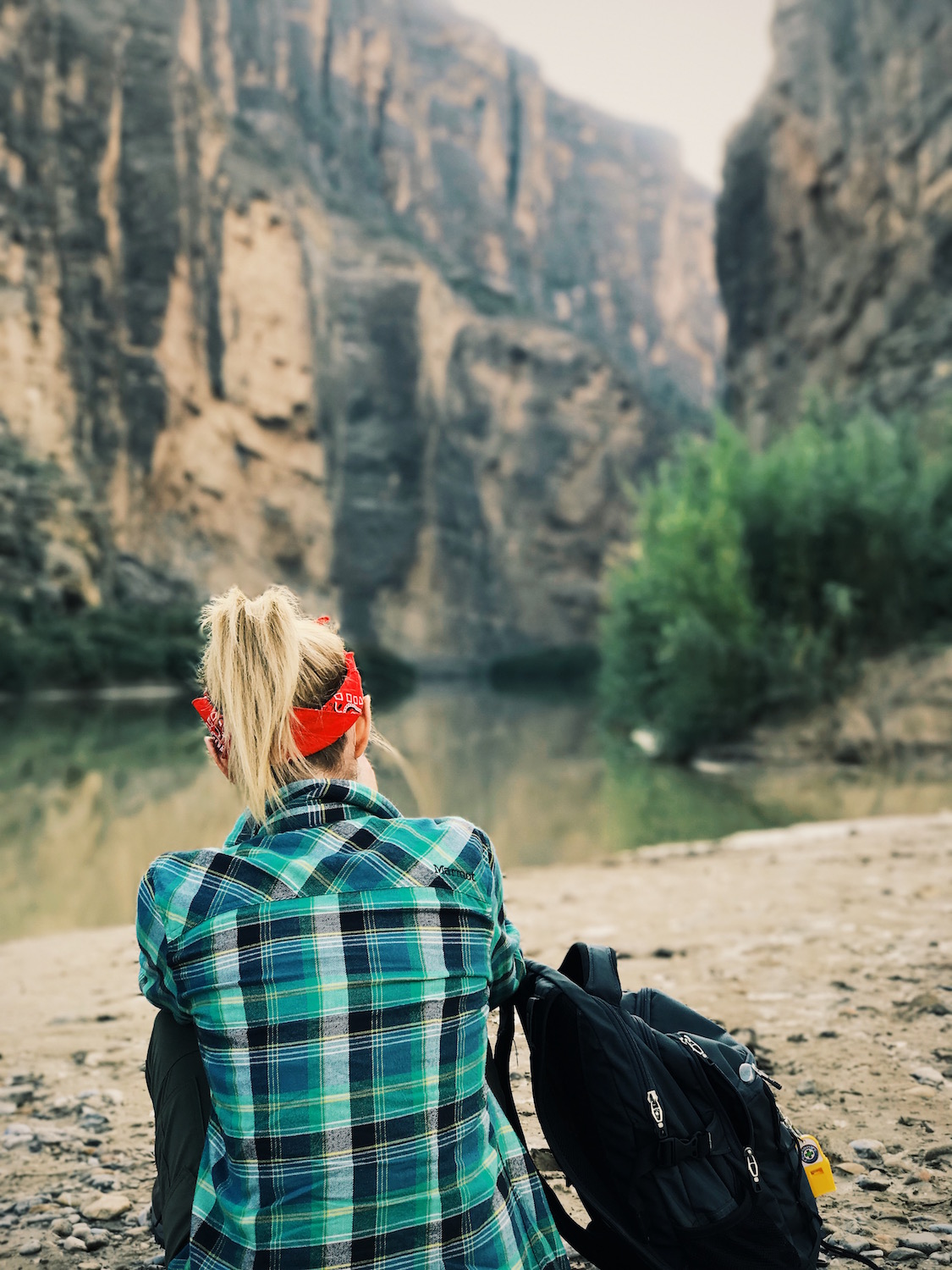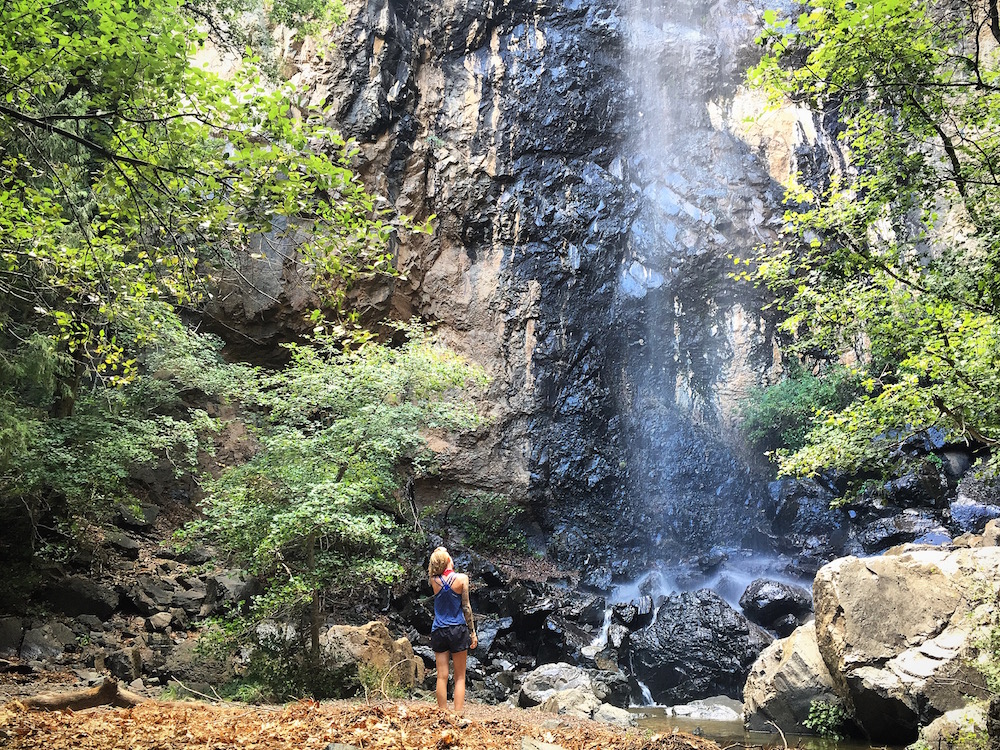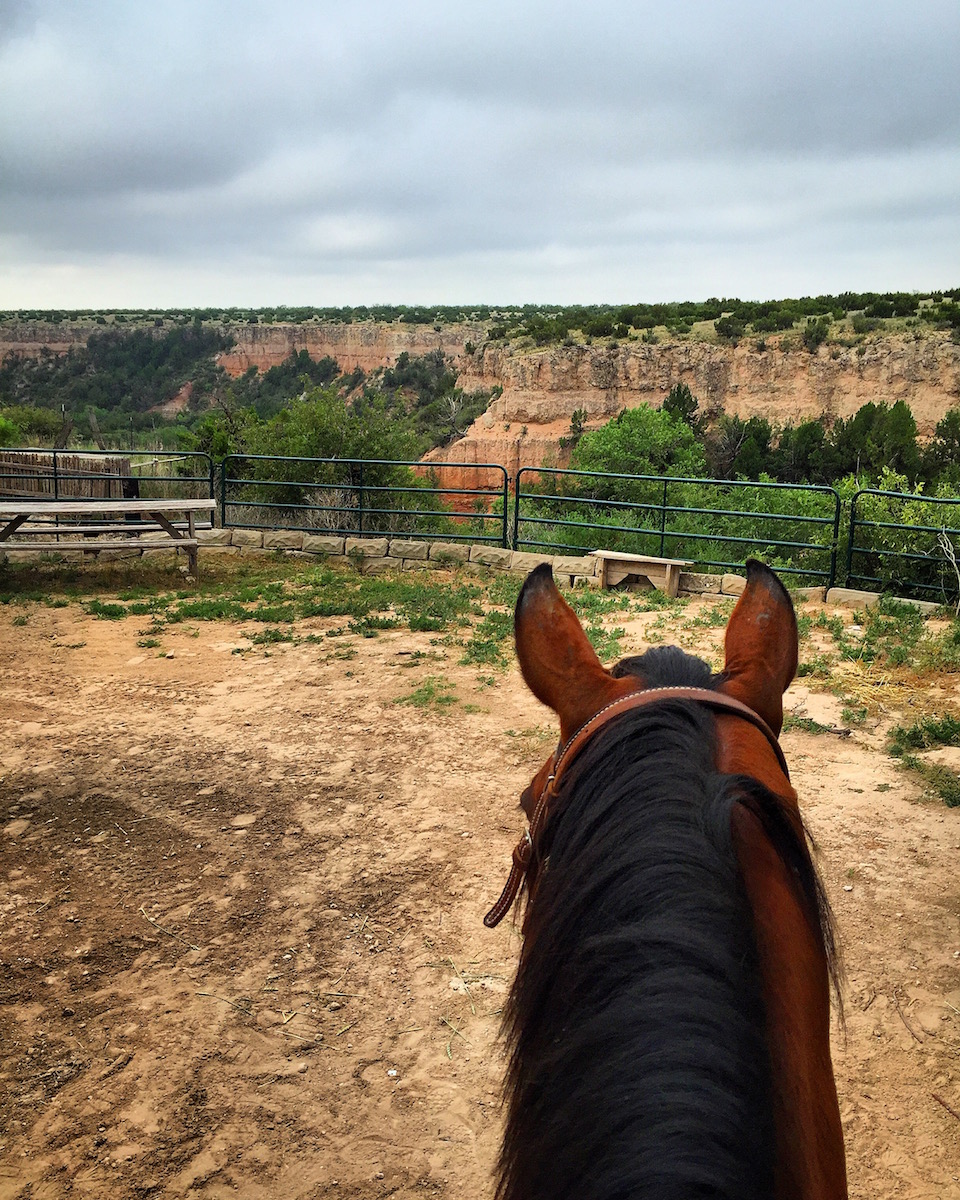Protecting What’s in My Backyard: Texas Public Land & State Parks

Protecting What’s In My Backyard:
Texas Public Land & State Parks
By Megan Radke
Growing up in rural Texas, being outside was just a part of life. I didn’t know much more than spending time outdoors, attempting to climb trees, swimming, fishing, feeding cows, camping, and accumulating one skinned knee, one blistering sunburn after another. While a lot of my childhood adventures took place on my family’s own farmland, many other memories were made in Texas State Parks.
Then, I didn’t know how special they were; to me, they were just fun. I honestly didn’t know the difference between a state park and a nearby lake. It didn’t matter though. The experiences I had while outside then, no matter where I happened to be, helped to shape the adult that I am now.
Following high school, and for a myriad of years afterward, I lost that outdoorswoman part of myself. Not intentionally, but I think, as many people do in their early twenties, I struggled with my personal identity and finding where I belonged. I was always the girl who was ready for an adventure but hiking and camping trips weren’t typically my vacations of choice and truthfully, if it involved a lot physical activity and not a lot of alcohol, I wasn’t interested. I can attribute this attitude in part to those I surrounded myself with, but it’d be unfair to place all of the blame elsewhere. I didn’t know where, who, or what I wanted to be.

In Santa Elena Canyon
In more recent years, however, in search of a clear head, and really, in search of something I didn’t know I was looking for, I began traveling on my own, going outside once again, primarily heading west to the Big Bend region of Texas. I have always had a vague connection to this area, feeling drawn there ever since visiting on a whim in college. So, I knew that if nothing else, visiting would offer me peace and quiet in a time when I needed it most.
As a result of those initial trips, how free I felt, how confident I felt, how connected to the land and to Texas I felt, I kept going. With each excursion, be it to Big Bend National Park, Palo Duro State Park in the Panhandle, or even within national forests in New Mexico, I added a hike, and then a longer hike, and then camping, and eventually solo backpacking.
I kept going because I kept feeling more and more like myself. I started to feel more independent. I started to rediscover a person I’d been all along. Because of state and national parks, because of public lands, I became a person I not only liked, but a person that I was starting to love. The typical lingering anxiety I had experienced for years, while not completely healed, started to lessen its grip. How uncomfortable I had felt in my own skin only a few months prior was dissipating. I began to see a strong and powerful woman in the mirror that I, with the help of nature, had created.
Because of state and national parks, because of public lands, I became a person I not only liked, but a person that I was starting to love.
I became enamored with a place I’d lived in my entire life, realizing that Texas, my backyard, offered everything from mountains, to deserts, to forests, to coastlines, and all in between.
The more that I traveled, the more time I spent outside, the more I felt compelled to try and share my love of nature, how these places had helped me find me, in an effort to get others outside. I started to feel that while I think Mother Nature is capable of raising her own voice to all those who are willing to listen, I wanted to lend mine to her so that she could be as loud as possible.

Waterfall in Pine Canyon at Big Bend National Park
I find today’s political climate to be is a combination of horrifying and infuriating. It’s become overwhelming, to say the very least. Educated as a journalist, I’ve always been someone who’s kept up with the news. Every year of my almost 31 years that I have been able to vote, I have. But it wasn’t until 2017 that I dove headfirst into being politically active, into being an activist. I didn’t really want to, but I didn’t really feel like I had a choice.
So, I started small by making phone calls to my state senators, to legislators, trying to clearly express my opinions and concerns to people who could make the biggest difference. I had never done this before so I didn’t exactly have a poised script, I just said what felt.
I eventually found websites like 5 Calls and thesixtyfive.org so that I could, at least, focus in on one issue. These resources provided me with phone numbers and talking points that likely made the most sense to the interns typically on the other end of the line. Today, I still get nervous prior to making these phone calls but again, I don’t feel like I have a choice.
I tried (and still do try) to advocate for every cause and issue that was important to me but it was no doubt that issues facing women and the outdoors were those that hit me the hardest, especially those that would have a direct effect on Big Bend National Park, Texas State Parks, and the Far West Texas region as a whole.
Soon enough, I found myself marching. I found myself protesting. I found myself attending every meeting and fundraiser I could that might make a difference. Earlier this year, I even found myself face-to-face with police officers, to whom I quickly cowered, while attempting to defend Big Bend.
Soon enough, I found myself marching. I found myself protesting. I found myself attending every meeting and fundraiser I could that might make a difference.
It’s difficult to explain all of the harm the region faces without getting political and that’s not my purpose, as everyone is entitled to their own opinions and beliefs. What I can offer are facts and resources, and all that being said, this region of my home does face significant environmental harm. I feel I have something of a responsibility to inform others, especially others who may love the Big Bend as much as I do, others who may have similar connections to the outdoors, anyone who may also see our natural resources, our state and national parks, and our public lands as irreplaceable treasures.
While it’s remote and while many may not realize the gems that lie in the West Texas desert, while many probably envision it as a desolate, dusty no man’s land, it doesn’t make it any less susceptible to the powers that be.
Far West Texas is one of the last, truly wild parts of Texas. The untouched area boasts some of the darkest night skies, the cleanest water, and the purest air.

Horseback Riding in Palo Duro Canyon
At least, it was untouched.
Currently, despite best efforts to stop the construction, the region faces threats from the already functioning Trans Pecos Pipeline, owned by Energy Transfer Partners. Similar to the Dakota Access Pipeline (which can also be attributed to Energy Transfer Partners), TPPL will carry gas over 100 miles from Coyanosa, Texas to the Texas/Mexico border near Presidio and Ojinaga. More information about the pipeline, the area that faces the biggest threat as a result, the concerns that landowners in the area have, and ways you can take action can be found via Big Bend Conservation Alliance and Defend Big Bend.
In addition, plans to begin fracking in Alpine High, which is an area near the town of Balmorhea, home to Balmorhea State Park, are now underway. This is worrisome for many reasons. The flares that are associated with natural gas and oil wells are already popping up in the region, which is currently threatening the area’s dark skies. The University of Texas’ McDonald Observatory, one of the country’s top astronomical research facilities, lies only miles from where these flares are, and will be, in view. The observatory requires truly dark skies to function.
Drilling like this has adverse effects on the area springs and groundwater. San Soloman Springs is the water source that feeds Balmorhea State Park and is also home to many endangered species. There is only enough oil in the region to serve the United States for half a year. You can find more information and learn how to take action also via Big Bend Conservation Alliance or by visiting the Facebook page of Save Our Springs Too, managed by a group of local residents who monitor the situation and effects on a daily basis.
Both issues are the subject of an upcoming film, Trans Pecos Documentary.
Finally, an issue that most all Americans are aware of today, the proposed border wall with Mexico. Should it be built, the wall will crash directly on the private land of many ranch properties, leave towns like Boquillas del Carmen, Coahuila (Mexico) struggling to stay afloat, and cut right through Big Bend National Park. If you’ve ever visited the park (even if you haven’t), you’ve likely seen the stunning Santa Elena Canyon. Separated by Terlingua Creek and the Rio Grande, Santa Elena’s walls rise almost 2,500 feet, Mexico on one side, the United States on another. Boquillas Canyon, on the park’s east border would face the same fate. A recent NPR piece details the effects a wall would have on the region and the opinions of those it would have the largest impact on.
In July of this year, I will embark on a four to six month ambassadorship to Big Bend Ranch State Park, working hands on within the park and doing community and social media outreach projects. While I’m only one person, I hope that through this ambassador role, I will be able to demonstrate the beauty of the park, the real mission of Texas State Parks, educate others on the unique and delicate ecosystem that is the Chihuahuan Desert, and encourage others to get outside and enjoy, while also protecting, the world that lies right outside in their backyard.
As I begin to step into the large shoes of an ambassador to this massive region of my state, my question to you is simple – what do you love most about what’s in your backyard and how will you work to protect it?
Megan Radke is a writer and wanderer living in Texas. Find her on Instagram.
Want to share your opinion with the President about 27 of our National Monuments that are up for review? Leave your comment here, and make sure that it is associated with DOI-2017-0002.
Hey Megan! I live in Houston and would love to join you on your journey (literal and figurative one)… I’ll message you on IG
wonderful essay! I am 60 now and feel the same way! Thanks for calling attention. I will try to do more. Thank you!
In my backyard I love glen canyon and bears ears! I hope that by sharing some of my writing it can help protect it. Thanks for the inspiration! Nice piece.